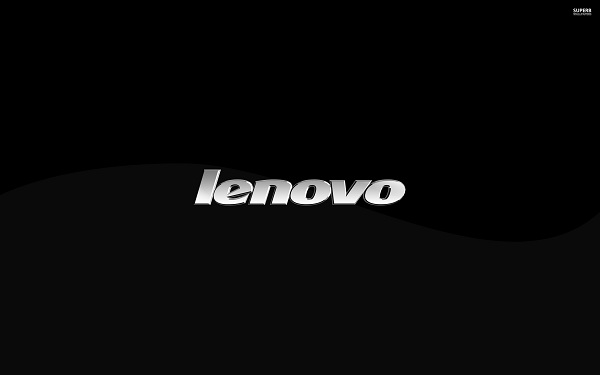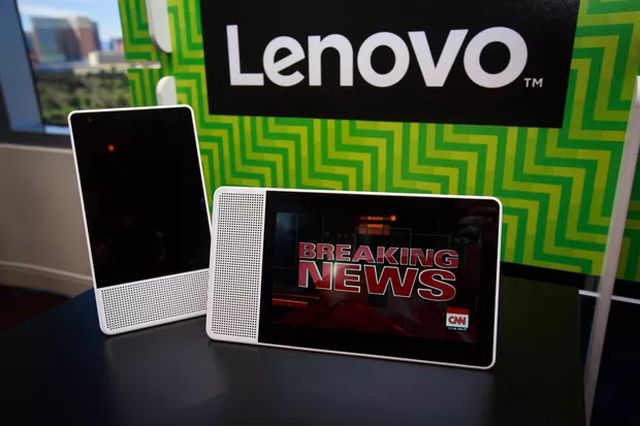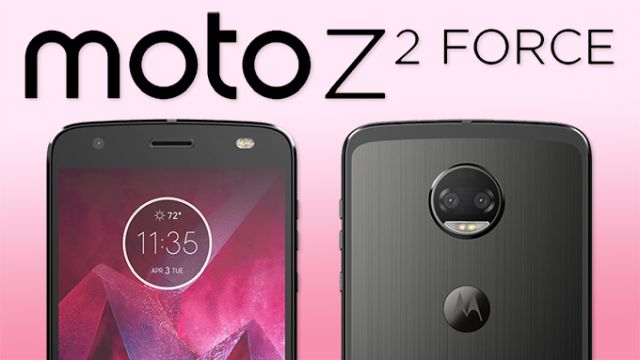
by admin | May 25, 2021 | Branding, Business, Economy, Markets, News, Sales, SMEs, Technology
 New Delhi : With a 22 per cent share, Lenovo leads India’s tablet PC market which witnessed a six per cent growth in the third quarter of 2018 compared to the previous quarter, according to a new report on Tuesday.
New Delhi : With a 22 per cent share, Lenovo leads India’s tablet PC market which witnessed a six per cent growth in the third quarter of 2018 compared to the previous quarter, according to a new report on Tuesday.
The tablet market in India recorded 0.83 million unit shipments in Q3 of 2018, said the CyberMedia Research’s (CMR) “Tablet PC Market Report Review”.
“Lenovo continues to be on the first position in overall tablet market, and most of the tablets were 4G and 3G. Tab 4 series had the highest sale in Q3 of 2018,” the report said.
Lenovo is followed by iball (16 per cent), Samsung (15 per cent) and Datawind (14 per cent), according to the report.
Samsung’s position has declined in the overall market because they have had the same strategy in the last few quarters, the findings showed.
Lenovo’s dominance is mainly due to the demand from the education and financial services sectors.
In the retail market, iball has strengthened its position, the research showed.
Apple, which launched iPad 6 Gen in the last quarter, achieved 51 per cent growth over the past quarter.
4G tablet shipments recorded 47 per cent sequential growth in the third quarter, said the report, adding that in the coming quarter, 4G market will grow to 60 per cent of the overall tablet market.
The tablet market needs to focus on enhancing their gaming features, it added.
—IANS

by admin | May 25, 2021 | Branding, Business, Investing, Markets, Networking, Online Marketing, SMEs, Technology
 San Francisco : Google has partnered Chinese technology company Lenovo to manufacture a new category of devices called “Smart Displays” which are interactive screens for smart home devices with Google Assistant.
San Francisco : Google has partnered Chinese technology company Lenovo to manufacture a new category of devices called “Smart Displays” which are interactive screens for smart home devices with Google Assistant.
“With the Google Assistant built in, the Lenovo Smart Display brings you the best of Google services, including Maps, YouTube, Calendar, Duo and Photos, in a visual and helpful way,” Chris Turkstra, Product Management Director, Google Assistant wrote in a blog post on Thursday.
With the interactive touch-and-voice combination, “Smart Display” would enable users to multitask and control their smart home devices with simple voice commands and touch gestures.
With “Smart Display,” Google is also offering three free months of YouTube Premium service for new subscribers.
“Your Assistant can even help you prepare a great meal on ‘Smart Displays’ with step-by-step hands-free guidance on screen. Of course, you can set timers and play music while you cook,” Turkstra added.
The “Lenovo Smart Display” is first being made available in the US in two display sizes– the 8-inch HD version for $199.99 and the 10-inch Full-HD version for $249.99.
“We’ll expand the Smart Display options with other partners, including JBL and LG. While there are over 1 million actions already available for the Assistant, we’re excited to see what developers will design for ‘Smart Displays’ too,” said Turkstra.
—IANS

by admin | May 25, 2021 | Branding, Business, Interviews, Investing, Large Enterprise, Markets, Technology
 By Gokul Bhagabati,
By Gokul Bhagabati,
New Delhi : With Artificial Intelligence (AI) catching the imagination of all and sundry but its implementation being largely restricted to a few global giants, Chinese technology major Lenovo says it has put in place a system that allows even organisations with limited means to leverage the power of AI.
AI is not new in the tech lexicon but what held back the implementation of this technology in the past were the required compute power and skill set.
However, only the big enterprises with deep pockets have been able to take advantage of the new advances.
Lenovo now aims to let small players leverage the AI with its end-to-end solutions.
“Our view is, nobody can buy a box, hire a data scientist and think they are on the path to AI business,” Madhu Matta, Vice President and General Manager, High Performance Computing and Artificial Intelligence, Lenovo Datacenter Group (DCG), told IANS in an interview.
The trick to get started with the AI journey, according to Lenovo, which has committed $1.2 billion investment for AI research and development, is to begin small.
“Start small and as you build your model and it gets more complex, add more infrastructure. That makes sense. Your start-up costs are low and the level of complexity you need is a lot lower,” Matta said.
One of the major innovations, Lenovo said it made towards achieving its objective of making AI implementation simpler, is the development of Lenovo intelligent Computing Orchestration (LiCO) — a software solution that simplifies the management and use of distributed clusters for High Performance Computing (HPC) workloads and AI model development.
Besides simplifying interaction with the underlying compute resources, this platform also enables customers to take advantage of popular Open Source cluster tools while reducing the complexity of using them for AI.
According to Matta, most organisations today need guidance in every step of their AI journey — from data extraction to modelling to getting actual results — and Lenovo is well-equipped to provide that.
“Starting small and growing is not magic. So we built an engine inside LiCO to allow you to scale, again starting small,” Matta added.
“The next layer we provide them is called a workflow template,” he said, adding that this element is necessary to meet the varied needs of different organisations.
“So we were able to develop a pre-trained model and a workflow template,” Matta noted.
“When a data scientist begins a job, he needs to be able to model but prior to that, he has to be able to build a workflow. We give those tools already for certain used cases. We have about 10 such tools,” he explained.
Lenovo has four innovations centres around the world where customers can bring in their data and experiment with them to get an idea of what AI could do.
“We give them a nice cushioned, protected environment with help. We focus on Open Source. We provide building blocks,” he said, asking, “Why should only the big names get the benefits?”
The transformative power of AI — from fraud detection in banks to disease diagnosis in healthcare — is immense.
“The government is looking deeply into multiple AI models to run on top of their eGov applications. In fact, the Indian government could actually be a pioneer in running AI for the masses,” Matta stressed.
(Gokul Bhagabati can be contacted at gokul.b@ians.in)
—IANS

by admin | May 25, 2021 | Business, Marketing Basics, Markets, Medium Enterprise, Technology

Moto Z2 Force
By Krishna SinhaChaudhury,
New Delhi : Lenovo-owned Motorola’s latest premium offering Moto Z2 Force, with dual rear cameras, is here and the company is selling it as a phone with a shatter-proof display.
Moto Z2 Force essentially replaces the original Moto Z with Moto “ShatterShield” technology as its USP and a bundled Moto “TurboPower mod pack” in India for Rs 34,999.
How does the smartphone fare when it comes to everyday usage? Here is our review.
The smartphone has a 5.5-inch Quad HD AMOLED shatterproof screen that did withstand drops and falls during our review test from approximately 3-4 feet height.
Despite being launched in 2018, the device features 16:9 aspect ratio that is now outdated as other flagships such as Galaxy S9, OnePlus 5T and Honor View10 are now offering a better 18:9 display — and this might be a put-off for those who want more a immersive experience.
Having said that, the good colour reproduction and viewing angles of the display mostly make up for the loss of screen space. It was bright with decent sunlight legibility.
The front of the phone is dominated by thick bezels above and below the screen, which was also present in the original Moto Z. This is because the company had promised that at least three generations of Moto Z phones would be compatible with the original “Moto Mod” — a clip-on accessory that transforms Moto Z Force into a super-zoom camera, a boombox, a projector and more.
There is an earpiece above the AMOLED screen that also houses the loudspeaker.
There is a 5MP selfie camera with a flash which was capable of taking decent self portraits.
Moto Z2 Force is comfortable to hold and for single-handed use but feels slippery when used without a Mod or a protective case.
The device is made of 7000 series aluminium which made the exterior look both tough and appealing. An added advantage of water-repellent nano-coating is there to protect the device from accidental spills or splashes.
The 12MP dual primary camera sensors come with phase detection autofocus (PDAF) and 4k video recording. It took good photographs in well-lit conditions with accurate colour saturation levels.
The phone runs Android Oreo Operating System (OS) and offered an enhanced stock Android experience.
Motorola has added features such as “one-button” navigation, “double chop” gesture to turn the flashlight on or off, twist the phone to launch the camera and take screenshot by placing three fingers on the screen, among others.
Coming to its performance, the Moto Z2 Force is powered by a Snapdragon 835 chipset which is the same as in OnePlus 5T device.
The phone offered snappy performance most of the time and the fingerprint sensor below the display interested us the most.
The phone can be put to sleep with a long-press and the same button can unlock the device.
What does not work?
The absence of weather-proofing could be a major put-off for most users.
We also noticed that the display was extremely prone to scratches even as it doesn’t shatter or crack easily.
Conclusion: This is undoubtedly a well-built device with Motorola’s promise of timely updates. If you are looking for a sturdy device with stock Android experience, go for it.
(Krishna SinhaChaudhury can be contacted at krishna.s@ians.in )
—IANS

by admin | May 25, 2021 | Branding, Markets, Technology
 By Hardev Sanotra,
By Hardev Sanotra,
Las Vegas : In a bid to reach out to a large segment of buyers, Chinese multinational technology company Lenovo launched three new products here to bring tech advancement in the fields of tablet/PC, Virtual Reality (VR) and smart home devices.
Introducing the products on the second day of the Consumer Electronics Show (CES) 2018 here, Matt Bareda, Vice President, Marketing for PCs, AR/VR and Smart Devices at Lenovo said that its rollout in the second quarter will be a “game changer” that will bring in the hands of the users whatever is possible in the computing space.
The tablet/PC combines the capability and versatility of both and Lenovo ensured that the battery in the newly-launched Lenovo Miix 630 2-in-1 detachable — that runs on Qualcomm’s Snapdragon 835 Mobile PC platform — lasts for 20 hours with full video playback.
The Miix 630 houses Windows 10 S that gives users the power and productivity of a laptop with the always on, always connected mobility of a smartphone.
Priced at $799.99, the 12.3-inch tablet is connected to the keyboard magnetically and has a digital pen for easing up usage. An attached, hinged flap acts as a kickstand and can assume a wide range of angles.
Windows 10 S enables Cortana, the voice-enabled digital assistant on the Miix 630 that comes with a biometric facial recognition. The Miix 630 is just 15.6mm (0.6 in) thick and weighs just 1.33 kg.
The Miix 630 (keyboard and Lenovo digital pen included) starts at $799.99, expected to be available beginning in the second quarter this year.
“It brings in a tablet/PC format the concept that we are all used to in mobile phones — always on. No need to shut it down every time your usage is over,” said Bareda.
The new Lenovo “Smart Display” home device aims to connect, inform, entertain and control with the help of Google Assistant, while sitting in the kitchen or drawing room.
The Lenovo “Smart Display” with the Google Assistant built-in basically looks like a mash-up between a tablet and a smart speaker.
Powered by the Qualcomm “Home Hub Platform” based on the Qualcomm SDA 624 SoC, the device ensures a robust Wi-Fi and Bluetooth connectivity.
It can reach out to Internet for all the information that one requires, while also connecting people remotely through audio and video.
The device — in 10 inch and 8 inch formats — will not only bring all entertainment to the screen on command but also has the capability of controlling all features of a smart home through voice command and can act as a video monitor for rooms or outside.
“You can tell the Google Assistant to pull the latest movie for showing, connect to a friend through video, show who’s at the door and bring the video on the latest dance steps that you want to practice,” Bareda said.
The company has put in a physical camera lock to obviate any accidental streaming out of live video from home or elsewhere.
“This feature, although simple, was arrived at after interaction with users to protect privacy,” Bareda added.
The 10-inch “Smart Display” is priced at $249.99 and the 8-inch device at $199.99. Both will be available for users early summer this year.
Lenovo also extended its AR/VR range by launching “Mirage Solo” — a standalone Daydream VR headset with camera that is aimed at providing live streaming to users, thus bringing the near reality of a remote event taking place.
The dual camera, as a separate unit, can upload live pictures through the mobile phone or Wi-Fi to YouTube for those with the headset to experience it anywhere.
“The camera is capable of capturing the depth of field, as opposed to just flat images and its simple and easy to use,” said Bareda.
The main advantage of this device is that it’s standalone and does not have any cable connected to it which had been the bane of all such VR or AR devices. You can move anywhere with ease and watch 180 degree images in 3D.
Bareda said that earlier launch of the AR/VR headset linked to Star Wars was a resounding success and the latest device would bring in more capabilities as it has tied up with Google Daydream 2.0 platform.
The device will come with a launch of “Blade Runner 2049” in early second quarter, but the company is keeping the price under wraps for later announcement.
The company also launched “Lenovo Mirage Camera” with Daydream technology to let users capture their own VR video in 180 degrees, and then watch it on Lenovo Mirage Solo.
(Hardev Sanotra is in Las Vegas at the invitation of Lenovo. He can be reached at hardev.sanotra@ians.in)
—IANS

 New Delhi : With a 22 per cent share, Lenovo leads India’s tablet PC market which witnessed a six per cent growth in the third quarter of 2018 compared to the previous quarter, according to a new report on Tuesday.
New Delhi : With a 22 per cent share, Lenovo leads India’s tablet PC market which witnessed a six per cent growth in the third quarter of 2018 compared to the previous quarter, according to a new report on Tuesday.

